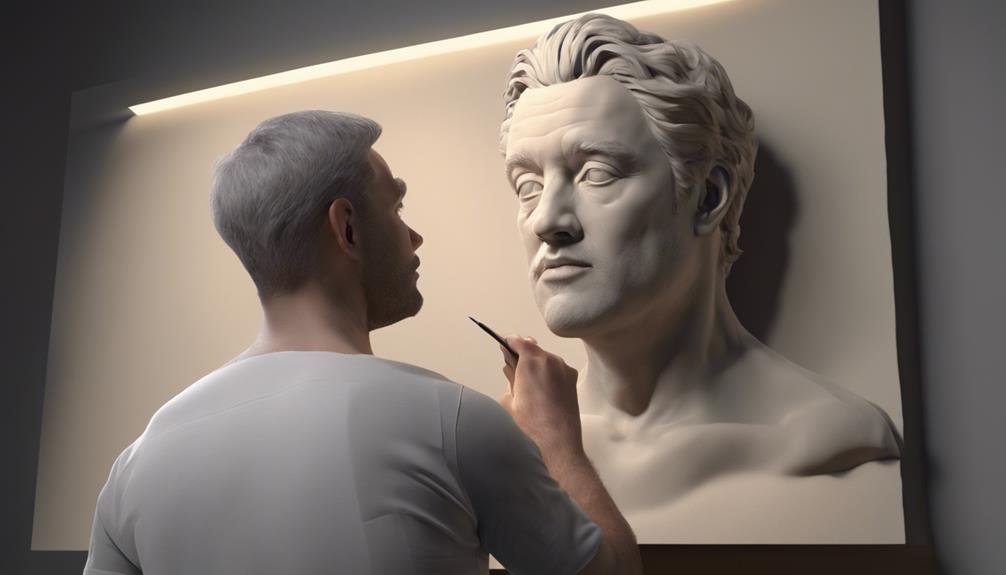Critical Observation as a Soft Skill
Mastering critical observation as a soft skill enhances your analysis and decision-making. Understanding behavior, perception, and human nuances is essential. Improve professional interactions with enhanced perception and keen awareness. Observing patterns aids in strategic decision-making and problem-solving. By recognizing trends and opportunities, you navigate challenges effectively. In complex scenarios, break down problems systematically, evaluate options logically, and stay informed. In the workplace, critical observation fosters continuous improvement, real-time feedback, and effective communication. It boosts productivity and nurtures proactive, learning-oriented environments. Embrace this skill to excel in decision-making and problem-solving scenarios. Tap into the power of observation in your professional journey!
Key Takeaways
- Critical observation enhances analytical skills and decision-making.
- It aids in understanding behavior and improving perception.
- Observing people provides insights into motivations and emotions.
- Paying attention to non-verbal cues is crucial for effective observation.
- It is valuable in professional settings for strategic thinking and decision-making.
The Significance of Critical Observation
Understanding the importance of critical observation is essential for honing your analytical skills and decision-making abilities. Analyzing behavior and improving perception are key aspects of developing this skill. By observing and analyzing how people act in various situations, you can gain valuable insights into their motivations, emotions, and intentions. This enhanced understanding of human behavior can be particularly beneficial in professional settings, such as during negotiations, interviews, or team collaborations.
Improving your perception through critical observation allows you to pick up on subtle cues, body language, and verbal nuances that others may miss. This heightened awareness enables you to make more informed judgments and decisions based on a deeper understanding of the situation at hand. By paying attention to details that others overlook, you can uncover valuable information that may have a significant impact on the outcomes of your interactions and endeavors. Hence, honing your critical observation skills is paramount for sharpening your overall analytical capabilities and enhancing your effectiveness in various aspects of life.
Developing Observational Skills
To enhance your observational skills, focus on actively engaging with your surroundings and consciously noting details that may provide valuable insights. Visual perception plays a vital role in developing observational skills. Train yourself to pay attention to the visual cues around you, such as body language, facial expressions, and environmental elements. By honing your visual perception, you can start recognizing patterns, identifying anomalies, and drawing connections that may not be immediately apparent.
Moreover, cognitive awareness is another key aspect of improving observational skills. This involves being present in the moment, fully focusing on what you're observing, and actively processing the information you gather. Practice mindfulness to enhance your cognitive awareness, allowing you to grasp subtle details and nuances that others might overlook. By sharpening your cognitive abilities, you can interpret situations more accurately and make informed judgments based on your observations.
Enhancing Decision-Making Through Observation
Improving your decision-making skills through keen observation is essential for effective problem-solving and strategic planning. By analyzing behavior and engaging in strategic thinking, you can enhance your ability to make informed decisions. When observing others, pay attention to non-verbal cues, tone of voice, and gestures to gain insights into their thoughts and intentions. This can be particularly useful in negotiations or when leading a team.
| Analyzing Behavior | Strategic Thinking |
|---|---|
| Observe body language for insights into emotions and reactions | Consider long-term implications of decisions |
| Notice patterns in communication styles for better understanding | Evaluate risks and benefits of different options |
| Study reactions to different stimuli for predicting future behavior | Align decisions with organizational goals for success |
Observing Patterns for Insightful Analysis
By recognizing recurring patterns in behavior and communication, you can extract valuable insights for in-depth analysis and strategic decision-making. Pattern recognition is an essential skill that allows you to identify trends, anomalies, and relationships within data or interactions. When observing patterns, pay attention to similarities in actions, responses, or outcomes that occur repeatedly. These patterns can offer a deeper understanding of underlying dynamics, motivations, or causes behind certain behaviors or trends.
Insightful analysis involves going beyond surface-level observations and delving into the significance of identified patterns. Look for connections between different patterns and consider how they may influence each other or point towards larger systemic issues. Analyzing patterns can help you forecast potential outcomes, detect early signs of problems, or uncover hidden opportunities for improvement.
Leveraging Observation for Problem-solving
Leverage your keen observation skills to identify key points for effective problem-solving strategies. When approaching problem-solving, focusing on specific details through observation can lead to insightful solutions.
Here are four ways you can make the most of your observation skills:
- Analyzing trends: By closely observing patterns and trends in data or behaviors, you can uncover underlying issues and potential solutions. This investigative approach allows you to explore deeper into the root causes of problems.
- Brainstorming solutions: Observation provides a wealth of information that can spark creative solutions. By actively observing the situation at hand, you can generate innovative ideas to address challenges effectively.
- Utilizing data: Observation coupled with data analysis enables you to make informed decisions. Utilize quantitative and qualitative data to support your observations and develop well-rounded problem-solving strategies.
- Identifying opportunities: Observant individuals are quick to spot opportunities amidst challenges. By keenly observing your surroundings, you can identify openings for improvement and growth.
Innovation and Critical Observation
When it comes to innovation and critical observation, your role is vital in fostering creativity within your team. By honing your observation skills, you can identify patterns, trends, and opportunities that others might overlook, thereby enhancing problem-solving capabilities.
This heightened awareness can lead to more informed decision-making processes, ultimately contributing to the overall success of your projects.
Role in Creativity
To foster innovation and enhance creativity, critical observation plays a pivotal role in recognizing opportunities for improvement and generating fresh ideas. By honing your observation techniques, you can uncover hidden patterns and connections that spark creative insights.
Engaging in critical thinking allows you to analyze situations from different perspectives, opening the door to innovative solutions. Drawing inspiration from diverse sources can fuel your creativity, leading to unique and original concepts.
Embracing ambiguity and uncertainty with a curious mindset enables you to explore unconventional paths, fostering a climate where creativity thrives. Remember, the ability to observe critically isn't just about seeing; it's about perceiving deeply and deriving meaningful insights that drive creativity forward.
Problem-Solving Through Observation
Embracing a vital sense of observation in problem-solving scenarios allows for the identification of innovative solutions through critical analysis and deep insights. When analyzing behaviors, pay attention to details that others might overlook; these nuances often hold valuable information that can lead to breakthrough solutions.
Identifying trends is essential in problem-solving, as patterns offer a roadmap to understanding underlying issues. By observing patterns over time, you can anticipate challenges and proactively address them before they escalate.
Observational skills not only sharpen your problem-solving abilities but also enhance your capacity for strategic thinking. Remember, the key to effective problem-solving through observation lies in your ability to decipher subtle cues and translate them into actionable strategies.
Enhancing Decision-Making Skills
Enhancing decision-making skills requires a keen focus on innovation and critical observation to navigate complex scenarios effectively. To excel in this area, consider the following strategies:
- Analytical Thinking: Emphasize breaking down problems into their core components to make informed decisions.
- Strategic Planning: Develop a systematic approach to decision-making by setting clear objectives and aligning actions accordingly.
- Cognitive Reasoning: Engage in logical analysis to evaluate different options and their potential outcomes.
- Continuous Learning: Stay updated on industry trends and best practices to enhance your decision-making abilities.
Applying Critical Observation in the Workplace
Incorporating critical observation skills in the workplace can substantially enhance decision-making processes and foster a culture of continuous improvement. By actively applying observational techniques in your daily interactions with colleagues, you can provide real-time feedback that helps refine strategies and actions promptly. Observing team dynamics closely allows you to identify areas for improvement and address potential conflicts before they escalate.
In the workplace, critical observation enables you to assess situations objectively, gather valuable insights, and make informed decisions. By paying attention to non-verbal cues, tone of voice, and body language during meetings or discussions, you can better understand underlying dynamics and viewpoints. This heightened awareness facilitates more effective communication and collaboration within teams.
Moreover, applying critical observation skills in the workplace can lead to increased productivity, enhanced problem-solving capabilities, and improved overall performance. By cultivating a habit of keen observation, you contribute to creating a more attentive, insightful, and proactive work environment where continuous learning and growth are embraced.
Conclusion
You've sharpened your critical observation skills, revealing a world of possibilities. Like a skilled detective piecing together clues, you sift through information to uncover hidden truths.
Your ability to connect the dots and see beyond the surface empowers you to make informed decisions and solve complex problems.
Embrace the power of observation as a soft skill, and watch as it transforms your approach to work and life.








